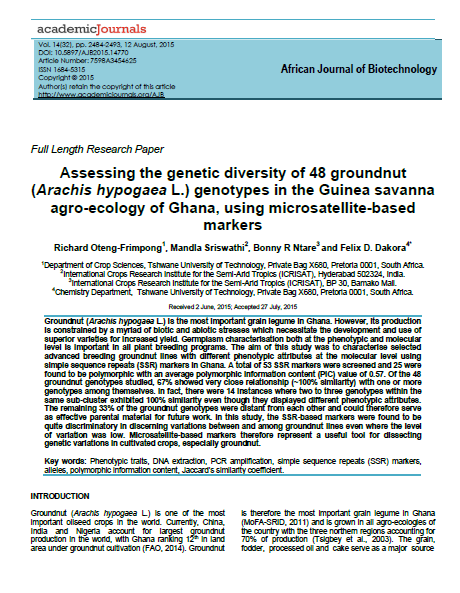Assessing the genetic diversity of 48 groundnut (Arachis hypogaea L.) genotypes in the Guinea savanna agro-ecology of Ghana, using microsatellite-based markers
Summary
Groundnut (Arachis hypogaea L.) is the most important grain legume in Ghana. However, its production is constrained by a myriad of biotic and abiotic stresses which necessitate the development and use of superior varieties for increased yield. Germplasm characterization both at the phenotypic and molecular level is important in all plant breeding programs. The aim of this study was to characterize selected advanced breeding groundnut lines with different phenotypic attributes at the molecular level using simple sequence repeat (SSR) markers in Ghana. A total of 53 SSR markers were screened and 25 were found to be polymorphic, with an average polymorphic information content (PIC) value of 0.57. Of the 48 groundnut genotypes studied, 67% showed a very close relationship (~100% similarity) with one or more genotypes among themselves. In fact, there were 14 instances where two to three genotypes within the same sub-cluster exhibited 100% similarity, even though they displayed different phenotypic attributes. The remaining 33% of the groundnut genotypes were distant from each other and could therefore serve as effective parental material for future work. In this study, the SSR-based markers were found to be quite discriminatory in discerning variations between and among groundnut lines even where the level of variation was low. Microsatellite-based markers therefore represent a useful tool for dissecting genetic variations in cultivated crops, especially groundnut.
Open resource Download resource

